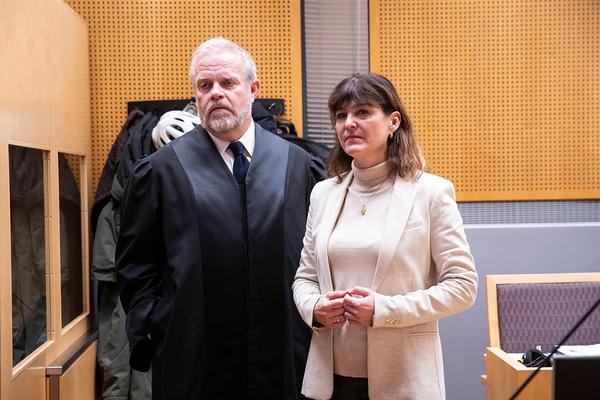20. juni 2018
What is ‘quality’ journalism?

News organizations are getting much better at helping their customers to find ‘quality’ content. But what does ‘quality’ mean to the news consumer? […]
News organizations are getting much better at helping their customers to find ‘quality’ content. But what does ‘quality’ mean to the news consumer?
‘Quality news’ used to mean broadsheet (in the days when we had big newspapers) and implied elite, serious, important journalism. It was, somehow defined (usually by the journalists themselves), by ‘not’ being populist, entertaining, or about ‘trivial’ subjects. But what is ‘quality’ in an age when the personal and emotional, the subjective and the immediate are significant drivers of public interest, debate and understanding of events? And how do we find it in an age of disintermediated, distributed, on-demand journalism that is blended into our individual, AI-driven news streams or feeds and recommendation engines?
Quality means the nature of things. That’s a bit general. How about; ‘It’s not quantity?’ The trouble with that is that for a news organisation quantity (or reach) still matters when you are thinking about what you can afford to produce. Or how much time each user has to consume. Or how you are going to pay for it. Even niche publishers need enough quantity to generate the revenue.
For the moment, let’s put aside the value judgement that somehow implies that ‘quality journalism’ is better and focus on its nature in a practical, editorial sense. How can we give the consumer a higher quality experience?
1. Quality = UX
It doesn’t matter how valuable the ‘quality’ of your content is if people don’t consume it. This is now partly in the hands of others if you rely on search or social networks. One of the most interesting conversations at a recent Google Newsgeist conference in Lisbon was with the platforms and the efforts they are making to ‘uprank’ quality content and to make it easier to identify and download. Those platforms may be getting better at sorting out misformation and offensive or harmful content. But they are not so well equipped editorially to assess the value of what is left. And anyway, do you want to give them that responsibility?
The first step is that eternal journalistic imperative: make it readable. That means eradicating friction and confusion from the split-second choice between access and clicking away.
That’s about content as well as the interface. A couple of hundred words from Axios may be better ‘quality’ for a hard-pressed user than that lovingly crafted long-form scrolling interactive with its unedited five paragraph scene-setting intro.
Most digital newsrooms are working hard on this, but why do you then cover your articles with attention-killing pop-up adverts?
2. Quality = personal service + curation
This is primarily about personalization. This may mean less is more. Too much choice can be counter-productive. Hence the limited headline stories and stand-alone summaries offered by an app like CompassNews. They throw in some AI-driven personalization of publisher’s articles on the curated topics that allow you to follow your own interests, but the starting point is still a human-centered editorial judgement.
But that has to be part on an on-going service that allows for feedback, interaction, and engagement. For example, the London Times has Facebook groups around topics, some now run by readers themselves. Others focus more on the subscription funnel. But that has to be more than just a revenue-raising exercise. What are you doing to measure the ‘quality’ of your service six months after sign-up?
3. Quality = added value
‘News’ as the reporting of something happening is now instantly distributed. Breaking news will be a valuable service for some media organizations.
But in an immediately connected world, the real opportunity for added value is context, analysis, and commentary. It is also expertise, research, experience as well as novelty. Investigate and reveal. Stop duplicating.
That might mean paying more attention to the 30% (or whatever) of your production that finds no audience. Audience data may help you to raise up the articles that are less-attended or to find better ways to justify them. But it might mean you should be doing something else with your resource and your users time? Leave the routine to automation.
4. Quality = relevance
Users are all different. Individuals are different at different times of their day or lives. Filter bubbles are an opportunity. I don’t understand why we worry about them. Research shows that social media users actually use more sources, not fewer. Yes, you might want to challenge their biases, but first of all, understand where they start from. In that sense, I would say that the best popular mass-circulation tabloids are ‘quality’ news. They are often brilliant at making political news relevant to an audience demographic that might not be so interested in mainstream politics. You might not always like how they do it, but their ability to engage a large (and often diverse) audience can be instructive.
5. Quality = diversity, serendipity and joy
We misunderstand why people consume news. It might be to be informed. The ‘labour’ of consuming news can be a reward in itself. That is good news for journalists who produce evidence-based reporting. But it is also about ritual, fun, spectacle, solving problems, and enjoyment. Stop treating those reasons as less ‘quality’. We want to go to the gym, but we also enjoy sunbathing. People don’t always know what they want. Surprise them. Surely a key quality value of news is to be told what you didn’t know or didn’t even know you wanted to know? And to create diversity you have to keep shaking up your own assumptions and systems.
I loved the Norwegian newsroom that made all their desks swap around for a day. Sports reporters doing politics and so on. Apparently, traffic went up. Refresh. Get off Twitter. Hire differently. The strongest echo chamber is often the newsroom itself.
6. Quality = impact
We think of quality as content and consumption but what about the effects of your journalism? Universities are now obliged to measure the ‘impact’ of research and there are formal measures such as citation or references in policy papers or legislation. If newsrooms could understand better the effect they have on people’s lives then they might better realize their value to people and communities. Journalists have belatedly started talking to the public about the importance of their work to democracy and the health of society. But what evidence do you have beyond self-preservation? Have you asked your users?
7. Quality = emotional experience
Traditionally, we have downgraded emotional journalism as, at its worst ‘sensationalism’, but emotions, feelings, identity, and values are vital parts of the quality of people’s lives and their media experience. Take it seriously. I have long argued for ‘emotionally networked’ journalism and the evidence is that it works, even in a serious subject setting.
One highly successful news app now has an algorithm that uses sentiment analysis of articles to construct a personalized news stream for users that gives them an emotionally-balanced ‘symphony’ of content. The idea is to give a psychologically varied experience. Consumption rates have improved.
Neva Labs is working hard on the wider ‘well-being’ aspect of news, trying to create machine learning that understands how information over-load and a diet of disaster and gloom can turn off users, while a ‘healthier’ diet can improve the quality of the experience.
8. Quality = Beyond ‘News’
News is changing fundamentally in its ‘nature’ or ‘quality’. Perhaps journalism is not enough? We’ve always understood our world through other media apart from journalism. As Hossein Derakhshan points out, the classic idea of news is shifting to the point where some people just don’t like it any more. Journalists respond in how they make it, to video, data or updates. But Hossein suggests we ought to look at cultural expression that does inform and influence in other ways such as drama or even music. Perhaps it is time for newsrooms to seek collaboration with other ‘communicators’ and creatives?
Short about the author:
Charlie Beckett is director of Polis, in the department of media and communications at the London School of Economics. With 20 years of experience as a senior journalist at the BBC, LWT and ITN, he has written and taught on media issues such as the role of journalism in creating civic society, ethical journalistic issues, international journalism, reporting war and terror, reporting politics and news values
This article is written by Professor Charlie Beckett, LSE @CharlieBeckett. You can read the entire article om Medium. Credit header photo: Beckett.



